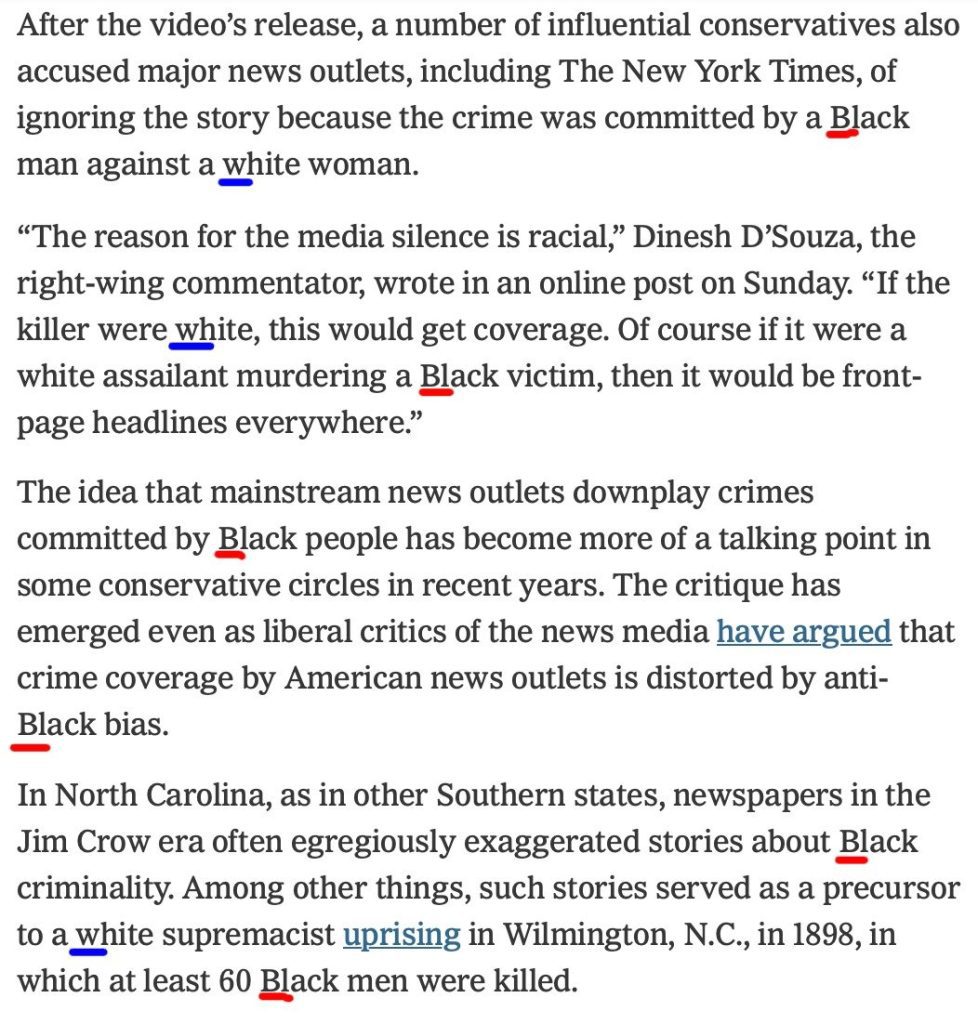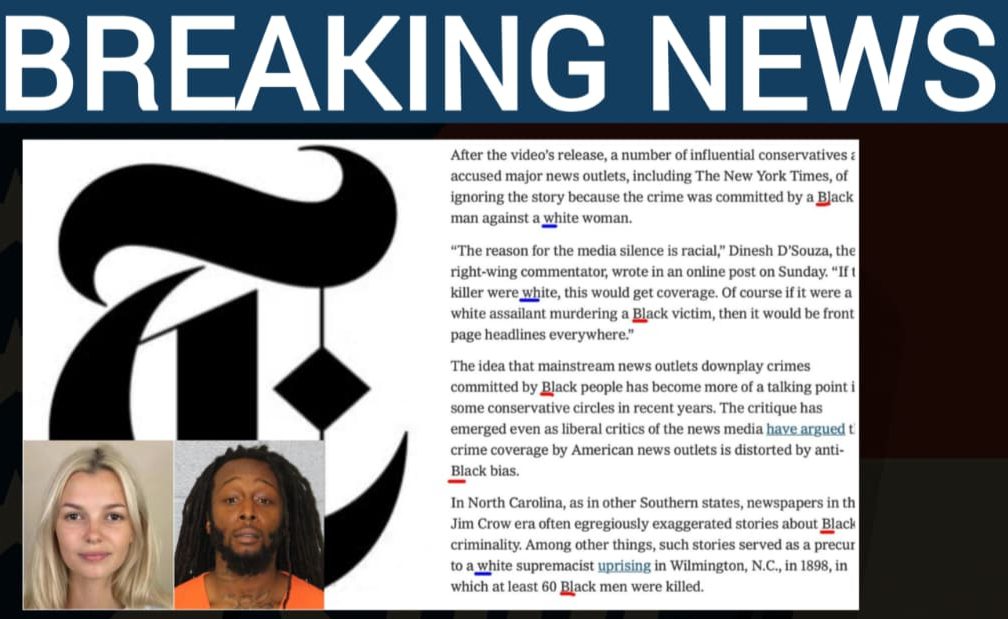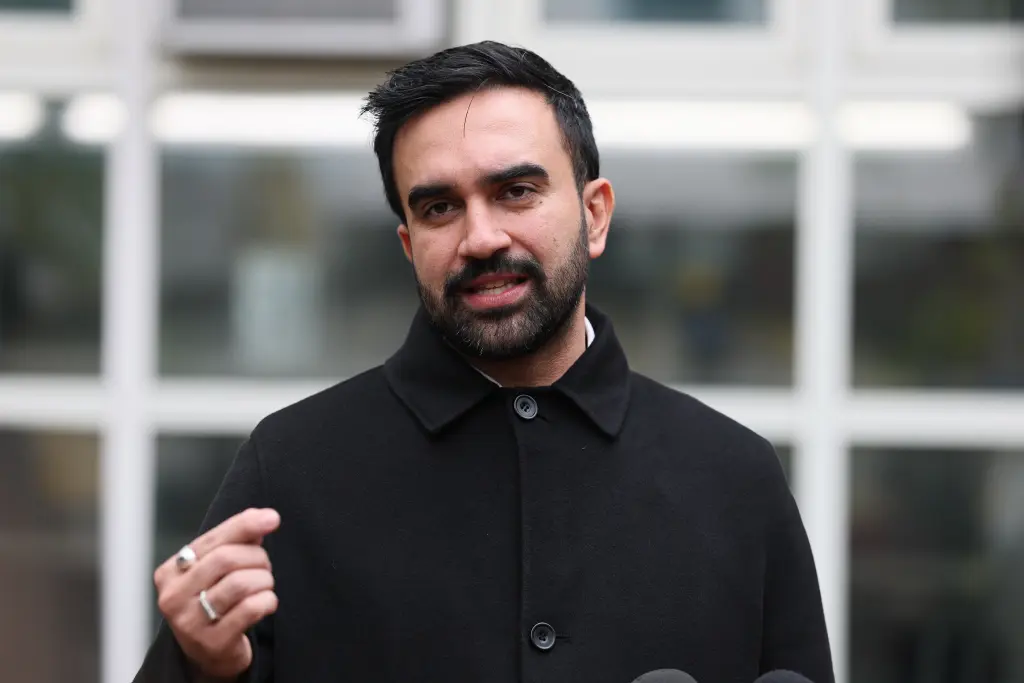The New York Times Accused of Double Standards After Calling Suspect “Black Man” With Capital B but Victim “white Woman” With Lowercase w
When it comes to news reporting, every word matters, and sometimes even a single letter can set off a storm. That’s exactly what happened after The New York Times published coverage about the murder of Iryna Zarutska, a young Ukrainian woman who was tragically killed in the United States. The case was already emotional, drawing attention not only because of the brutal crime itself but also because of how major media outlets chose to cover it. What pushed this story into the spotlight even more was the way The New York Times described the race of those involved. The article identified the suspect as a “Black man” with a capital B while calling the victim a “white woman” with a lowercase w. To many readers, that small difference in capitalization felt like a huge signal of bias.

This was not the first time the Times used “Black” with a capital letter. In fact, since 2020 the outlet has adopted an official style guide that capitalizes Black when referring to people or culture, a decision made after months of racial justice protests. At the same time, the Times continues to keep “white” in lowercase. The editors explained at the time that they believed capitalizing Black recognized a shared identity and experience, while capitalizing white could be misunderstood as lending legitimacy to white supremacist ideology. That explanation has been public for years, but in moments like the Zarutska case, it hits readers differently. Many people saw the side-by-side language in this crime story and felt that it unfairly emphasized one race while minimizing the other.

Commentators quickly reacted. Conservative voices such as Dinesh D’Souza called the choice “racial” and accused outlets like the Times of ignoring crimes where the suspect is Black and the victim is white. On social media, critics shared screenshots of the text, circling the capital B and the lowercase w, and accusing the paper of creating a hierarchy of importance between racial identities. For people already distrustful of mainstream news, this detail seemed like proof of their belief that coverage is uneven. Even for some readers outside politics, it raised uncomfortable questions about how much language choices can subtly shape narratives.

To be fair, not everyone agrees with the criticism. Some media analysts have defended the Times, pointing out that the decision to capitalize Black was made for consistency across many outlets and that the lowercase white is simply an editorial choice to avoid confusion with extremist language. They argue that this is more about style than bias and that most readers rarely notice until it becomes highlighted in such a sensitive context. But whether intentional or not, the impact is clear: people do notice, and they care.
The deeper issue here is how much trust audiences place in news outlets. When people already feel that stories of violent crime are filtered through political or cultural lenses, every detail becomes evidence of bias. The Zarutska case is heartbreaking on its own, and it deserved clear and respectful coverage. Instead, it has now become part of a larger debate about fairness in the media. Critics argue that if roles were reversed, and it were a white suspect and a Black victim, the story would have dominated headlines nationwide. That is not a claim that can be proven, but it is a perception that has real weight in today’s divided media landscape.
What this moment shows is that words matter more than we often realize. A capital letter can feel like recognition, and a lowercase one can feel like dismissal. For Iryna Zarutska and her family, what matters most is justice for her death. But for readers who look to the press for honesty and balance, the way her story is told also matters. The uproar over one capital letter is a reminder that trust in journalism is fragile, and even the smallest details can shake it.



